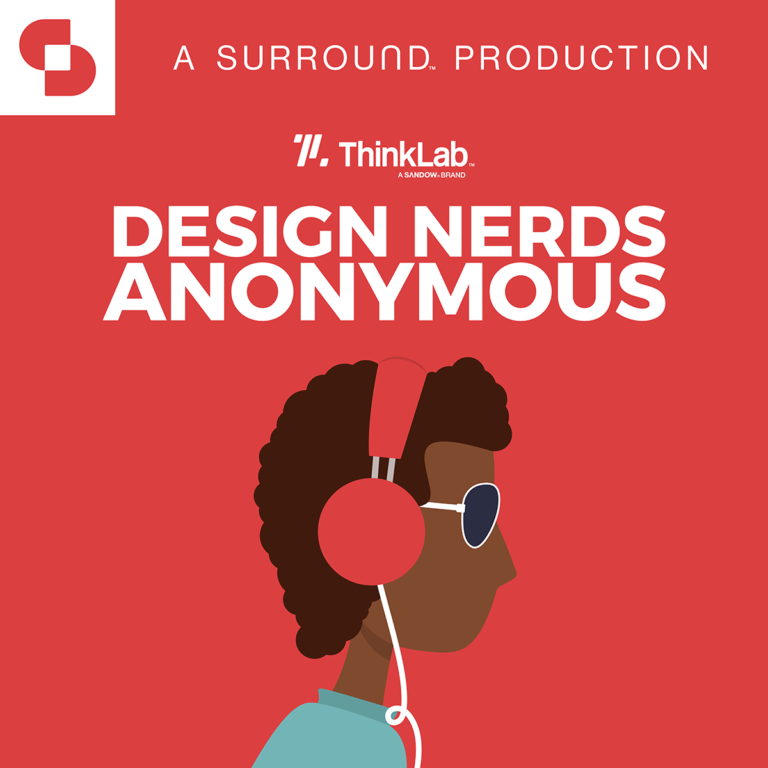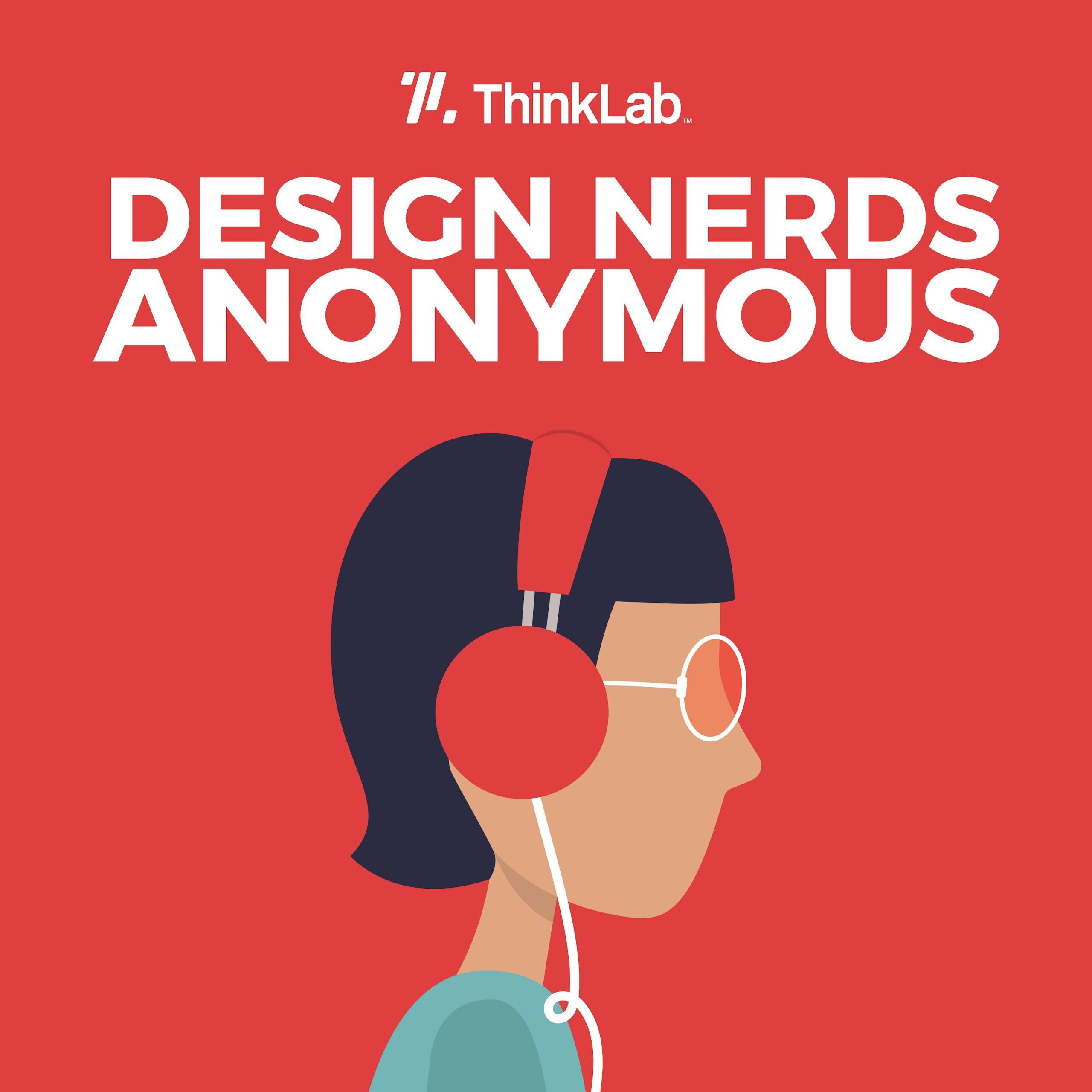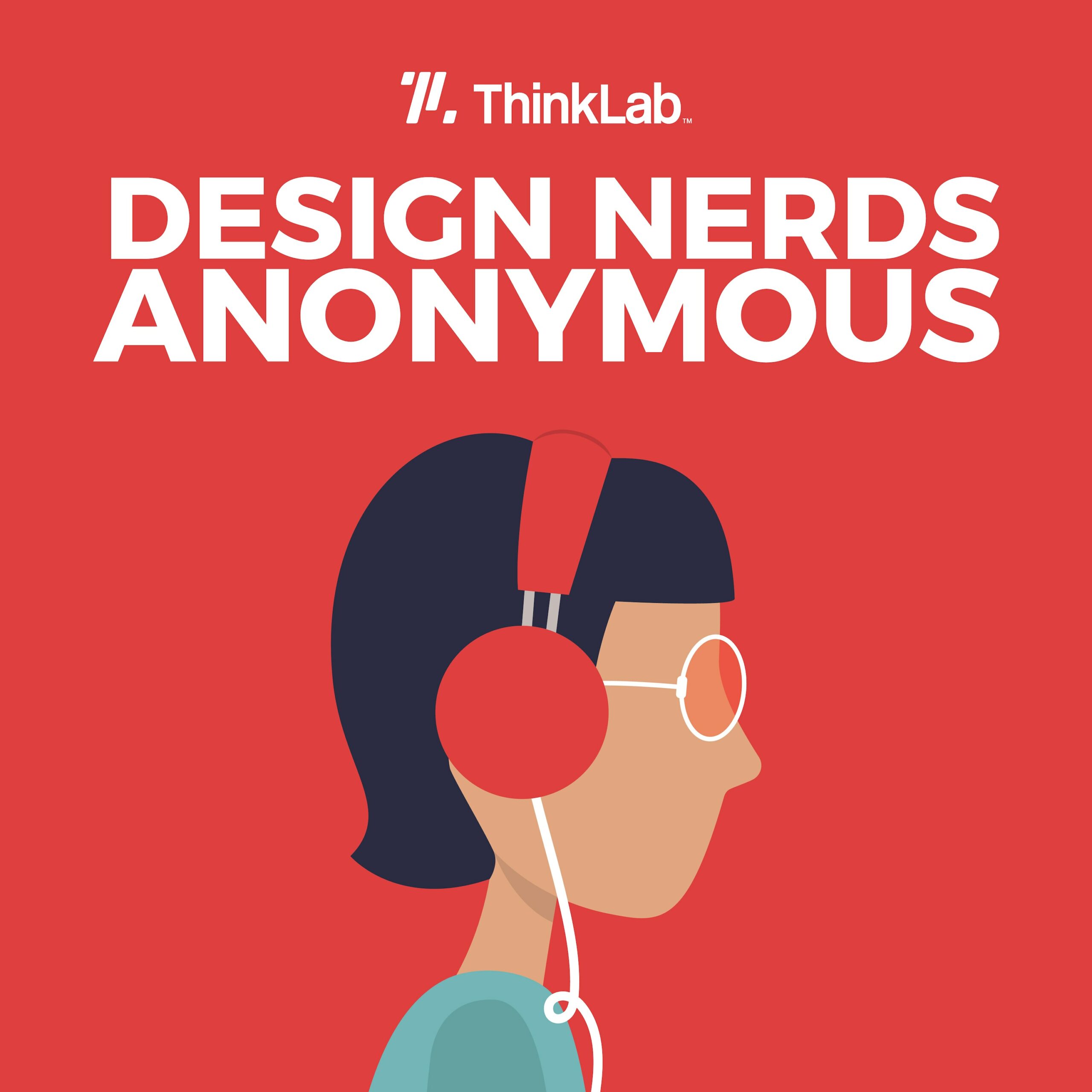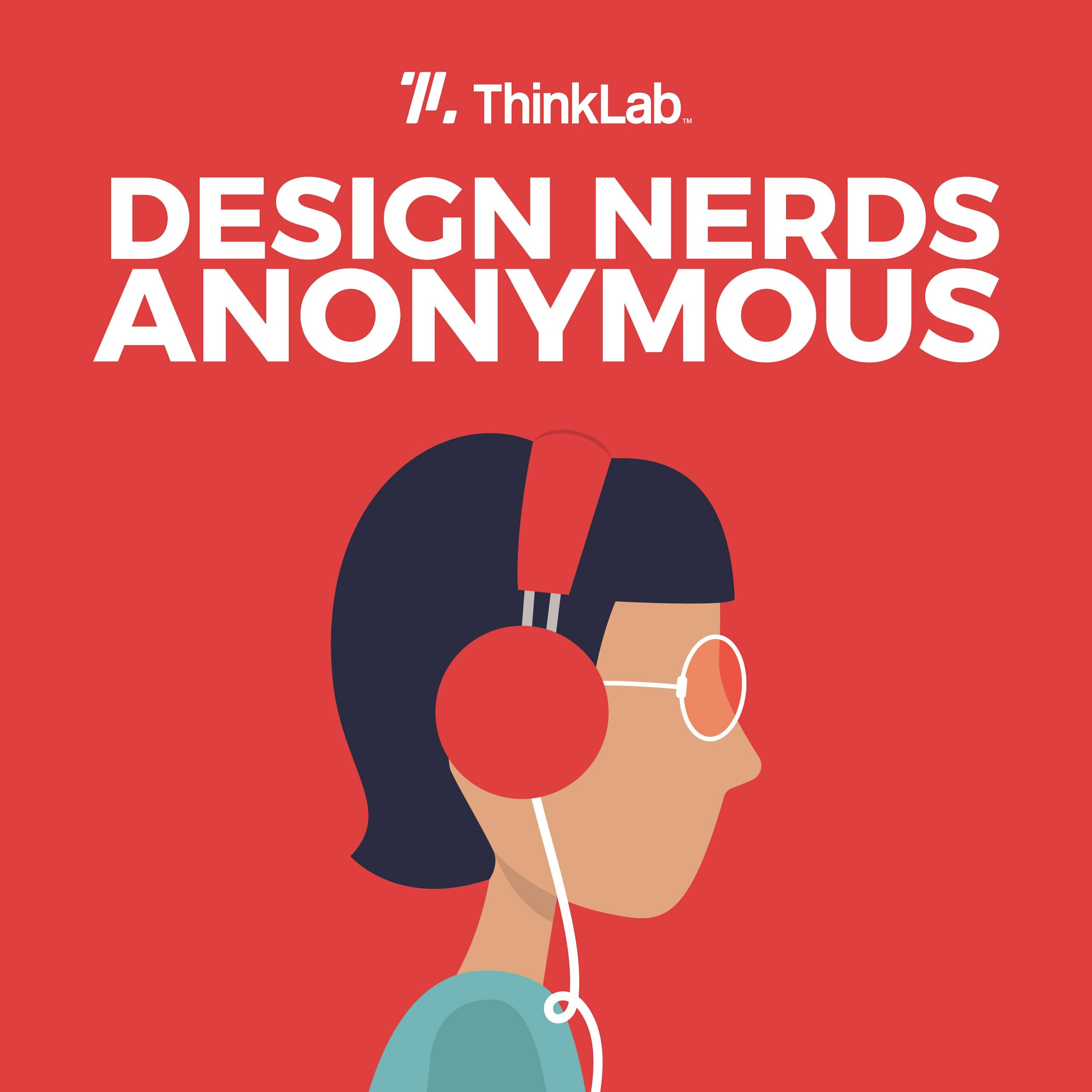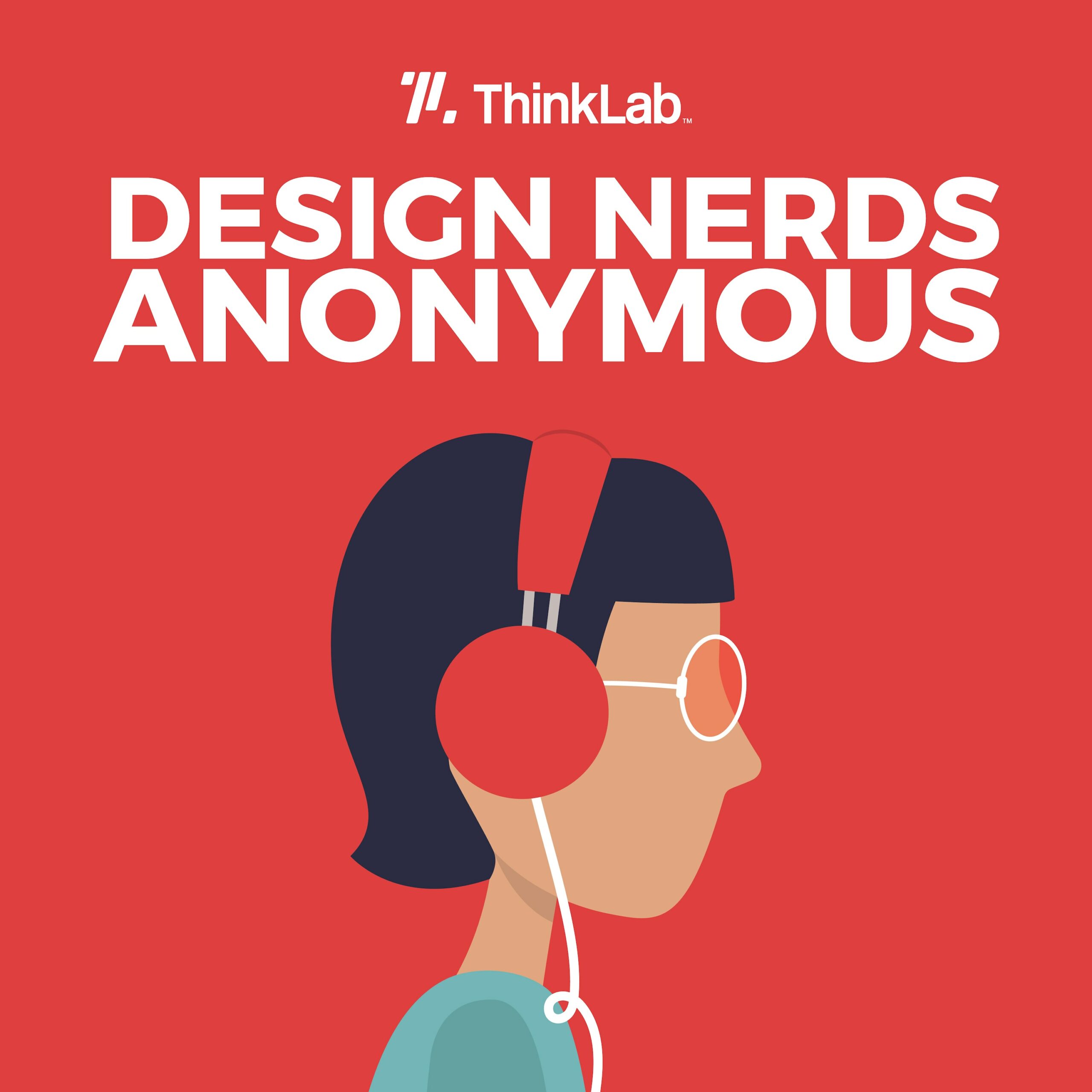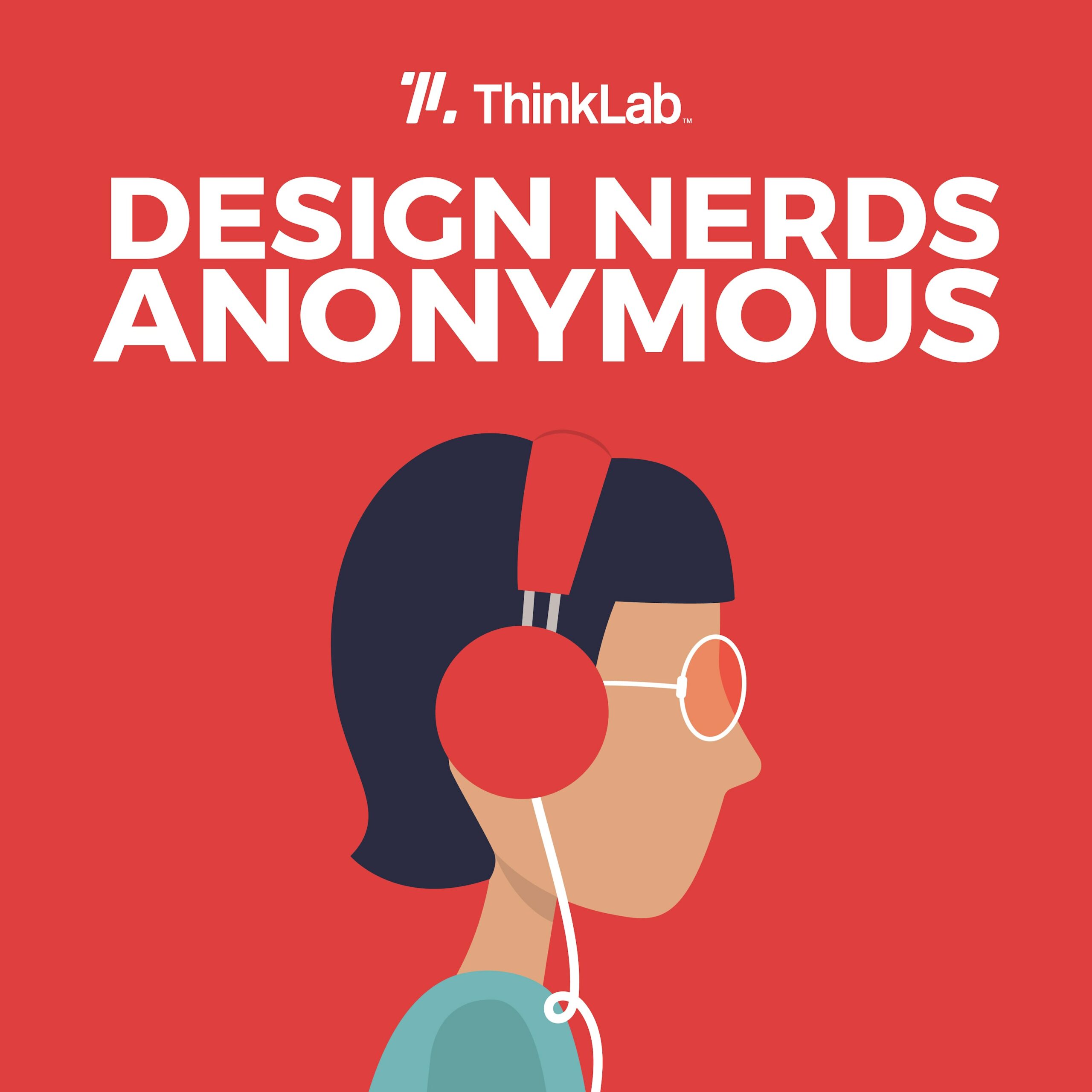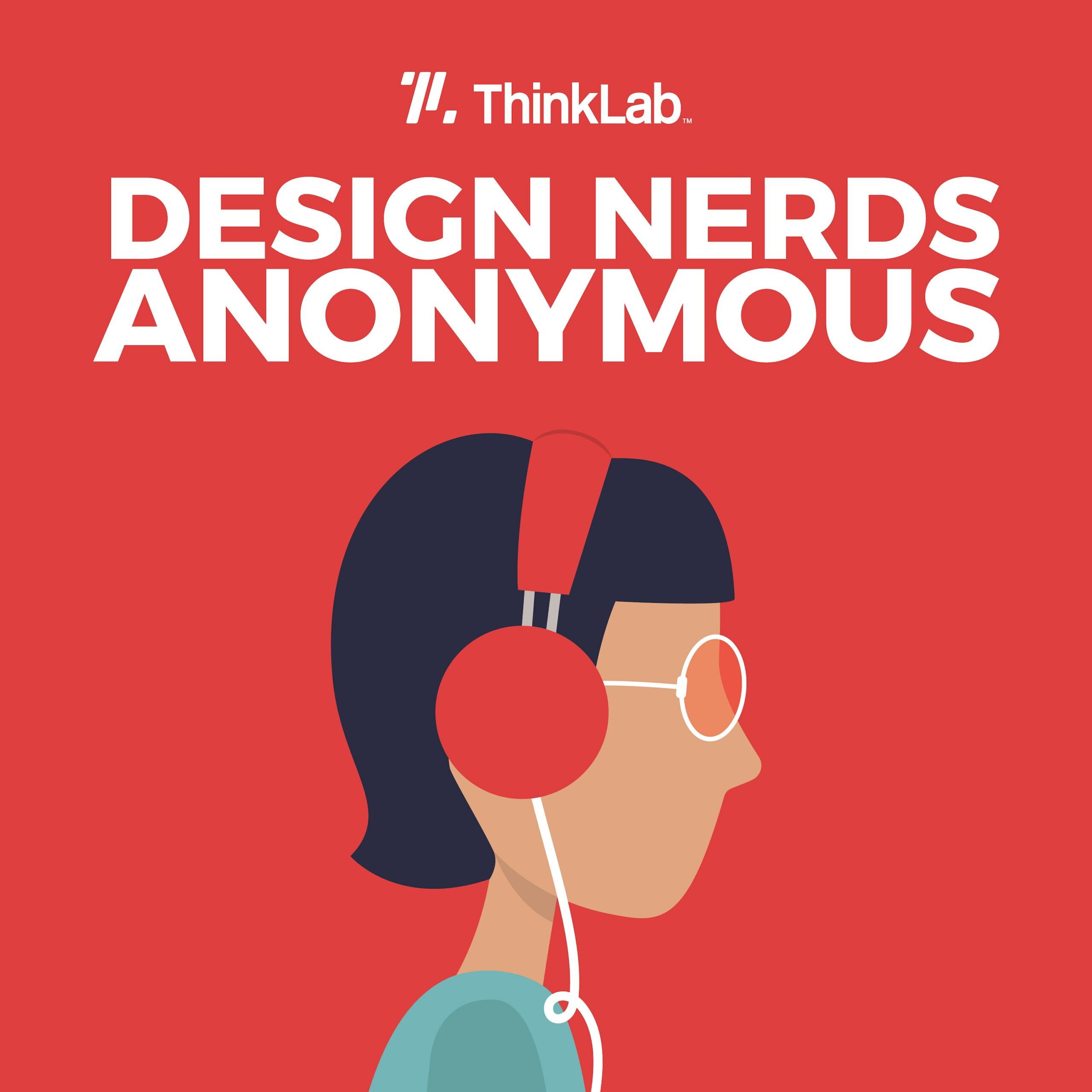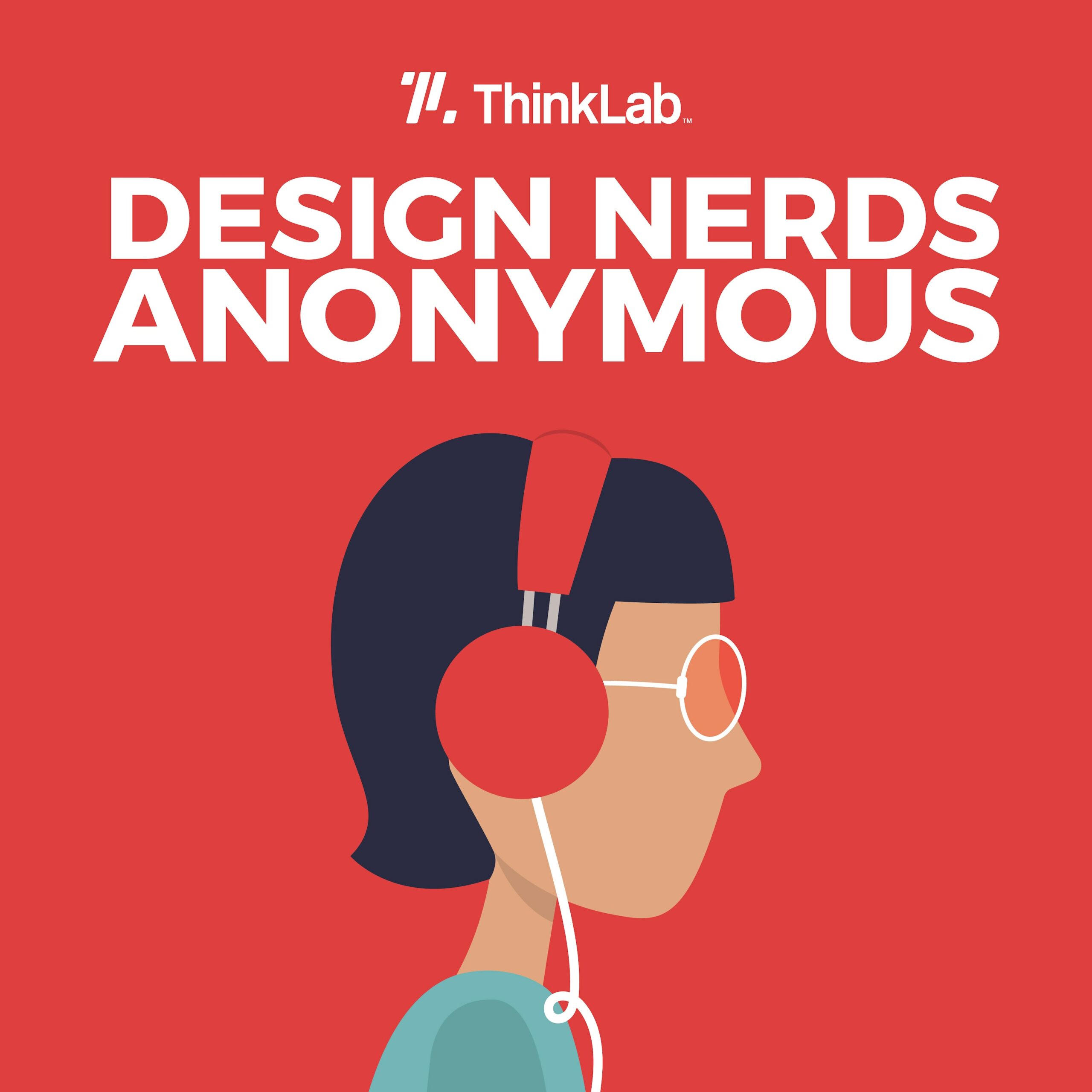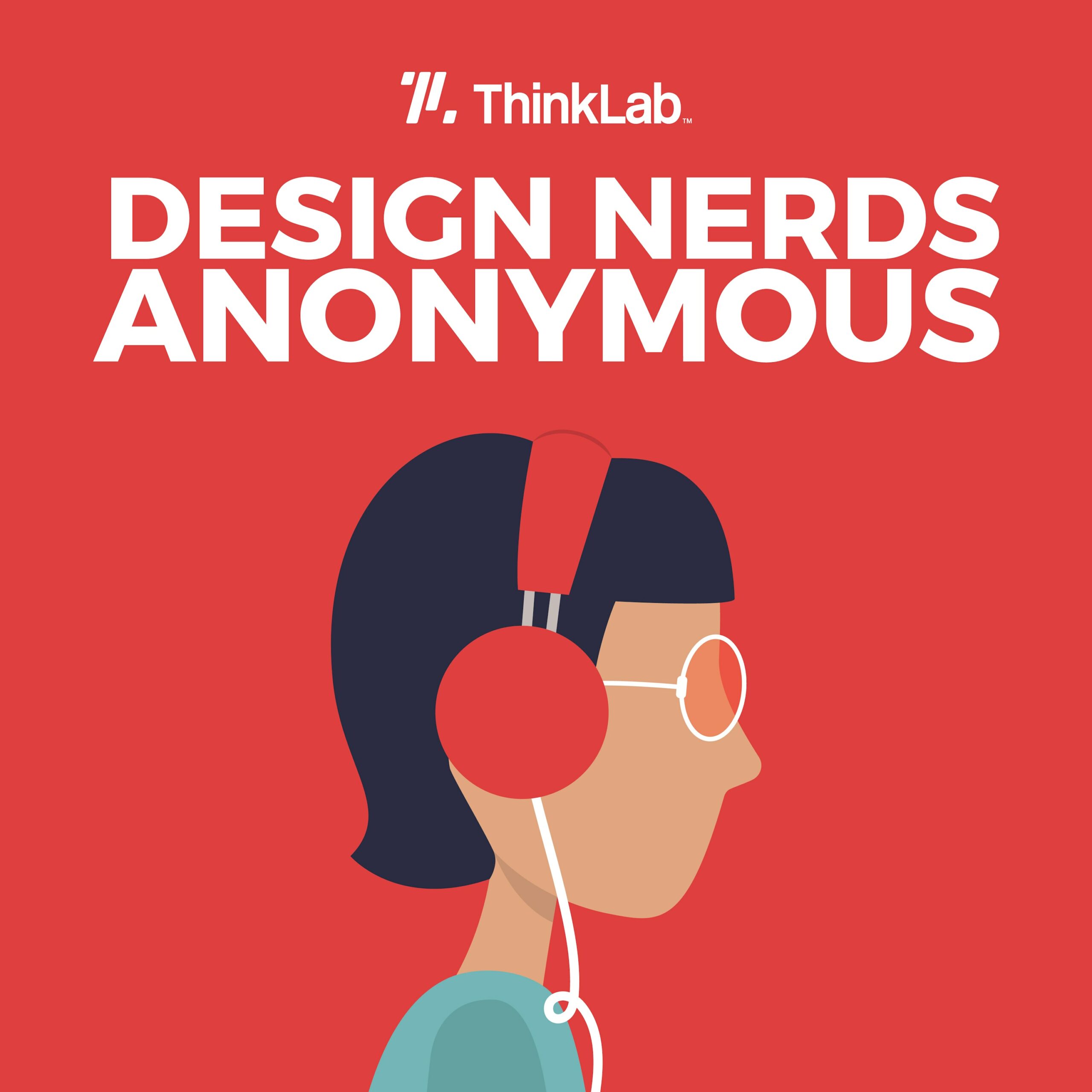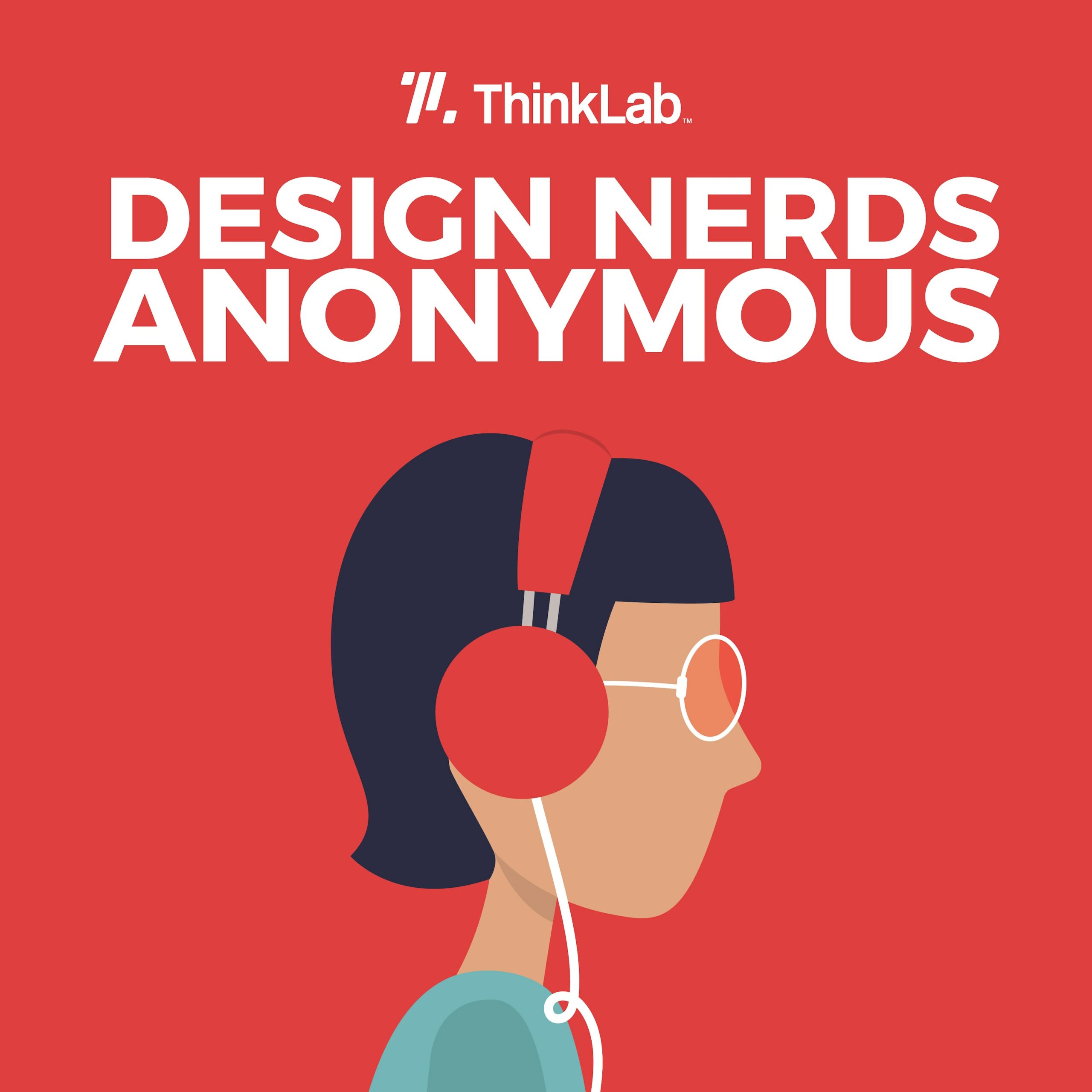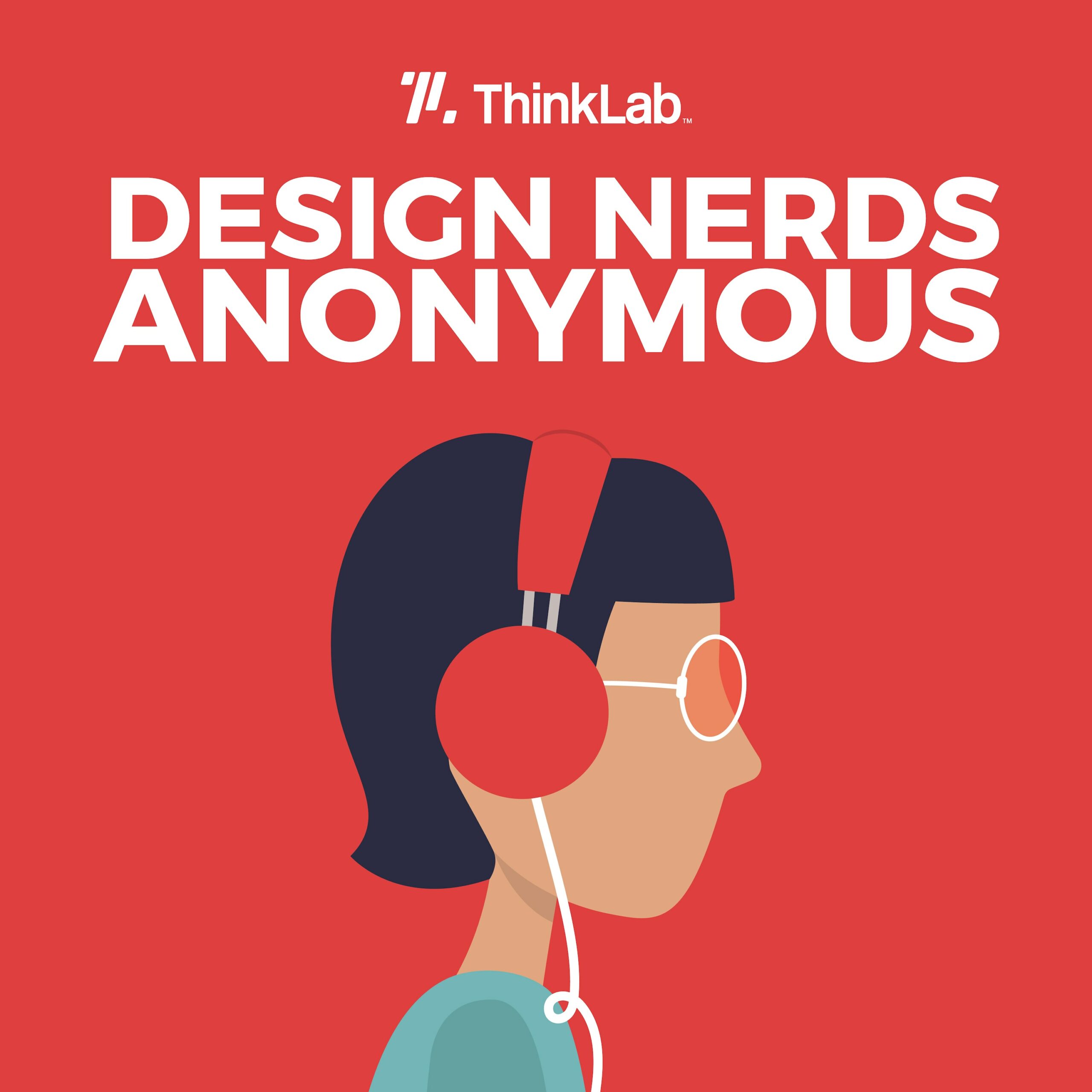In this episode, ThinkLab interviews Ryan Jenkins, Wall Street Journal best-selling author and keynote speaker, author of The Generation Z Guide and Connectable and Bobby Bonett, Executive Vice President of Digital and Strategic Growth at SANDWO Design Group, about what makes GEN Z different and how their preferences may have a “ripple up” effect across the design industry. You’ll learn what younger generations expect from brands who are trying to recruit, retain and connect with them, and how to get ahead.
In this episode:
[8:00] Learn about why there is tension as we come to terms with GEN Z and even millennials.
[10:00] Ryan discusses how Gen Z is approaching the job hunt and the surprising platform that they rely on the most when searching for their next career step.
[20:00] Bobby highlights how younger generations prefer to interact with brands today, and how that will likely evolve
Connect with our interviewees on LinkedIn:
To hear more from Ryan, register here for his highly anticipated 2023 Design Hackathon Keynote titled “CONNECTABLE: HOW TO RECRUIT, RETAIN, AND CONNECT WITH GEN Z”
This season of Design Nerds Anonymous is brought to you by Mannington Commercial, THEMART, and NeoCon, companies doing big things to move the design industry forward.
Design Nerds Anonymous is a proud member of the SURROUND Podcast Network. Discover more shows from SURROUND at surroundpodcasts.com. This episode of Design Nerds Anonymous was produced and edited by SANDOW Design Group, with music from Blue Dot Sessions. Special thanks to the podcast production team: Hannah Viti, Wize Grazette, and Samantha Sager.
Amanda Schneider: George Orwell once said, every generation imagines itself to be more intelligent than the one that went before it and wiser than the one that comes after it. Now, whether you’re trying to recruit, retain, or connect with the next generation of designer, this episode is for you. Every generation enters the workforce with its own nuanced communication style, and if you follow the media, each time the culture shock is greater than the previous one. From viral ticks about shocking email sign offs to subtler yet provocative statements like “We rarely use email” from Gen Z.
Clearly, Gen Z’s entree into the workforce has already made its own wave. But what do we need to consider as we look towards recruiting, retaining, [00:01:00] and even selling to this next generation of designers? According to the World Economic Forum, currently Gen Z represents approximately 30 percent of the total global population. By 2025, Gen Z will make up 27 percent of the workforce.
Now, the oldest of this generation was born in 1997. And if you consider a young architect or designer’s journey over the past few years, that means if they were on a direct path, they likely graduated from high school in 2015 and from a four-year college in 2019. At best they spent one year in what one recent interview with two Gen Z librarians called ‘The Before’ in reference to how our industry worked before offices shut down due to a global pandemic.
Younger Gen Z designers [00:02:00] first onboarded during the pandemic lockdowns. Some even working with colleagues for more than a year before ever meeting face-to-face.
Now many of these designers are getting their first chance to go into the office, forge in-person relationships, and create their own set of workplace norms making the most of their generation’s strength. So how will this generation shape the design industry?
Ryan Jenkins: What’s really fascinating about Gen Z is that they’re digital first, right? But they also, according to our research, 72 percent of them want more face-to-face interaction. And that is very jarring for most people. Because they think, “Oh my gosh, they just want to use digital.” And that is just not true. They are screaming for more human connection.
Amanda Schneider: The voice you just heard was from Ryan Jenkins, a Gen Z expert and author of several best-selling books.
In chapter one, Ryan will take us through why we should care about [00:03:00] generations, and specifically how Gen Z can influence this world for the better; IF we listen.
In chapter two, we’ll apply this to our industry through a conversation with SANDOW Design Group’s very own Bobby Bonett, Executive Vice President, and a true thought leader in helping brands connect digitally.
Welcome to season four of Design Nerds Anonymous, the podcast that sparks curiosity at the intersection of business and design. I’m your host, Amanda Schneider, founder and president at ThinkLab, the research division of SANDOW Design Group.
So, let’s dive into chapter one. Meet Ryan.
Ryan Jenkins: I’m Ryan Jenkins, Wall Street Journal best-selling author and keynote speaker, author of The Generation Z Guide and Connectable.
Amanda Schneider: Let’s start by understanding why we should even care about studying generations from someone who does it for a living.
Ryan Jenkins: I’ve spent a decade studying generations. I think it’s important to [00:04:00] start that generations are not absolutes, they’re clues. Hopefully, our listeners will agree after our short conversation that they’re very big clues on how you attract, lead, sell, communicate, fill in the blank.
I don’t think would’ve ever been interested in generations 20-plus years ago. What makes today hyper different in the game changer in all of this is technology and the internet. That’s changed everything. That’s the greatest disruptor humanity has ever seen.
Generation Z is entering the workforce, and they’ll be the fastest growing generation in the workforce over the 10 to 15 years. A lot of folks are still stuck on millennials, and it gives them high anxiety to think that there is another generation already in the workforce, but they’re here.
When you think about Gen Z, the entire generation, all of Gen Z is younger than Google. As a millennial myself, that makes my hips hurt every time I say that statement. Think about that: The whole generation has never known a world where the world’s information hasn’t been curated into a blank search [00:05:00] box.
They’ve never known a world where a smart device has been outside of arm’s reach. So, this has fundamentally shaped how they interact with the world and how they communicate, how they learn, how they buy, fill in the blank. It’s changed how all of us live, work, and play but for the emerging generation, they literally don’t know anything else.
And if you and I – humans – if you can’t remember what it was like prior to an invention, then to you, it’s not an invention. It’s standard. Think about all the inventions that Generation Z has never known has never lived without right to them. Uber is not an invention. Because it’s always been standard and that’s where their expectations now start when it comes to transportation.
Now you can fill in the blank for all kinds of other things, and you start to get a glimpse into why this is a very unique time in history and why the emerging generation is acting and behaving and has expectations that are fundamentally different than any other generation. So that’s really why it’s an important conversation.
Amanda Schneider: Let’s walk through three big clues as to why [00:06:00] Gen Z will be one of the most influential generations, and how understanding them can benefit all. Number one, generations are shrinking.
Ryan Jenkins: The generational spans were typically 15 to 20 years because that was a natural step in your ancestry. But, generational thought leaders and experts would agree the timeline is shrinking.
Look at millennials, that’s a large cohort and really that cohort could probably be split up into two different generations. The generation that played Oregon Trail and the generation that did not play Oregon Trail. That’s kind of a cheeky way to think about it, but really what that’s saying is the generation that played Oregon Trail was kind of pre-digital.
I didn’t grow up with a smartphone and I didn’t get social media till I was in college. I operate differently than younger millennials who can’t really remember a world that wasn’t hyper connected. And, we’re saying the same thing with generation Z. Generational spans are likely to shrink from the 15 to 20 years to 10, maybe even five-year spans.
What’s happening [00:07:00] in today’s mobile connected hyper connected world to where a Gen Zer, in Des Moines, Iowa could witness an event that happens halfway around the world in real time. And that event can imprint them during the formidable years of that age cohort to where that they then process something differently.
They look at the world differently. They make different decisions. Because we’re so hyper connected these events and all of the things that are happening around the world are now being exposed and imprinting generations.
Amanda Schneider: Number two, generations for the first time have skills that previous generations did not.
Ryan Jenkins: For the first time ever we’re seeing generational, behaviors ripple up. So typically, skills and knowledge have always been passed on generation by generation by generation.
But for the first time ever, we have an emerging generation that has skills and knowledge that previous generations don’t have. If you think about that’s the first time in history that’s ever happened.
That’s why a lot of tension began around the millennial [00:08:00] generation, because cuz They were the first ones ushering this digital workforce and they had skills and knowledge that previous generations didn’t have. And now gen Z, that whole generation has skills and knowledge that previous generations don’t have.
Think of it this way: In a lot of my presentations I’ll show a commercial where it says ‘grandkids equal free tech support.’ and these two generations Zs come up to their grandparents’ house and the grandparents come out and they go it’s great to see you’ and instead of hugging them, they just hand ’em a bunch of technologythat’s not working and they say ‘here, fix this’.
We can all chuckle and no matter what generation we’ve been on one side or the other of that equation to where Gen Z’s helping grandma and grandpa or mom and dad troubleshoot a laptop, how to use a smartphone, what Facebook is, how to use TikTok. And that’s a dynamic, we’ve never seen happen before, and that’s coming into the workforce. It’s causing tension, but boy, there are a ton of opportunity and all kinds of competitive advantages we can harness if we lean into that versus trying to dismiss it.
Amanda Schneider: Number three. Generations give us clues [00:09:00] as to how we need to adapt.
Ryan Jenkins: We shouldn’t be changing for generations we should be changing in light of today’s exponential times. And how do you start learning? What’s happening today in exponential times, generations give us a really interesting indicators on what’s work’s going to be like what the future of your industry’s going to look like in the future.
And that’s what’s important. So don’t focus on changing for a generation changing in light of today’s changing times.
Amanda Schneider: So, at this point, we know why generations are important, how current generations are different, and why we should care, and why we should care. But let’s dive into the meat of this episode. What should we actually be doing differently to attract, retain, and connect with this generation?
Let’s start with attract.
Ryan Jenkins: When it comes to attracting gen Z, folks often don’t know where to start. And according to the research, [00:10:00] gen Z, they first approach family, friends, and then folks that they might know that work at that organization.
The second step, which catches everyone by surprise. And I’ll ask the listeners, what’s the top platform that gen Z uses to learn about an employer.
Amanda Schneider: I read your book. So, I cheated! It’s YouTube, right?
Ryan Jenkins: YouTube. That’s right. most people will think, Glassdoor or indeed or Google and, they think maybe Twitter, Instagram. I’m getting more responses about TikTok and TikTok is quickly rising. The problem is there’s not a lot of employers that are playing in that space yet.
So, their first stop is YouTube. And why they’re going to YouTube is because they want to see what it looks like to work there. They want to get a feeling of what the workspace is going to look like. Some people that they might working alongside, they’re trying to get a tangible sense. So, if you don’t have those properties out there, to attract and pull them in, then they’re going on to somewhere else.
And someone that you didn’t even know was considering applying for a job at your organization is gone.
Amanda Schneider: Second, let’s explore how you retain [00:11:00] Gen Z.
Ryan Jenkins: I discovered that generation Z was the loneliest and most isolated generation, by a massive amount, which was very concerning; and this was all pre-pandemic. And so I began researching why were they so isolated and lonely and what could we do to help this generation to make them feel more connected and
this greater sense of belonging at work.
And then COVID really pulled back the curtain on that conversation, which is tremendous, because it shouldn’t be a shameful conversation. It’s a universal human emotion and then that accelerated the research.
So, I actually ended up, studying over 2000 global workers and partnered with McGraw Hill to release, Connectable and it hit number seven on the Wall Street Journal. One of the studies that we highlighted was Harvard University’s study of adult development, which is one of the longest studies on human development. And it’s still going on today.
It’s been going on for over 80 years, which is incredible. And they studied over 2000 people and they found that the definitive answer to a long and healthy life. It’s not wealth diet, exercise, sleep. It’s actually quality [00:12:00] connections. It’s our relationships.
I try to make a very compelling case that belonging, the sense of connection is our most significant human need.
It’s not our most urgent, but it’s our most significant human need and data after data, research after research is showing that more and more workers, especially gen Z are craving this type of connection at work. So, if we can deliver a sense of belonging amongst our workforce, they’re going to be that much more engaged at work.
In fact, let me share one extremely startling statistic with you, and that is, folks that have a low level of belonging inside an organization they have stronger intention to quit by 313 percent. 313 percent! They are more likely to have strong intentions to quit when they don’t have a strong sense of belonging.
So, I think we are wildly underestimating how much we need this and it takes intentional effort, but it doesn’t take much to actually cultivate these connections.
Amanda Schneider: And third, let’s explore how you coach, [00:13:00] manage and lead Gen Z.
Ryan Jenkins: Last but not least. I want to give folks something as it relates to leadership. Leadership is shifting.
The example I like to give here is think about the ways in which you gathered information 20 years ago. You probably went to a central source. You went to a person, you went to an institution, you went to a book. All of our information was centralized back then.
Today, where do you go for information? You go anywhere, right? You can go all these different places. Information has been decentralized. Well, whether you know it or not, that’s shaping how we should lead because no longer – especially for gen Z – they don’t have to look up to a central source or a person for all the information. So, this hierarchy inside organizations doesn’t make as much sense for gen Z.
They want this more networked approach. And so the leadership, style that works best for the emerging generation is this idea of coaching, being someone that can come alongside and guide them through their learning. [00:14:00] The essence of coaching in my mind is, resist advice giving and ask more questions.
Now that’s very simple, but it can be hard to do. That’s a really helpful leadership tactic for gen Z. It’s also a really great leadership tactic to lead across generations.
Amanda Schneider: I asked Ryan to add one more word to his trio – Connect – because in talking to him and in reading his book, whether you’re trying to attract, retain, coach, or even sell to this generation, what they’re looking for, may surprise you.
Ryan Jenkins: What’s really fascinating about gen Z is that they’re digital first right? They’re constantly entrenched in that world. But also, according to our research, 72% percent of them want more face-to-face interaction and that held true during the pandemic. That is very jarring for most people. Because they think “Oh my gosh, they don’t want to talk, they just want to use digital.” And that is just not true. They are screaming for more human connection.
And so, I think we have to start blending better. [00:15:00] So what we recommend is blend high touch with high tech. At the end of the day, we are all craving connection. Doesn’t matter. I don’t care if you’re introvert or extrovert.
If you’re a gen Z or a baby boomer at the end of the day, we all crave it and we need it now more than ever.
Amanda Schneider: Now I know some of our listeners are getting excited. We hear face to face is important and we think, yes, back to normal. But Ryan makes the point that this face time won’t be back to the “Oregon Trail” normal. It will be much more intentional and an intentional mix of in-person and digital interactions.
Ryan Jenkins: Here’s a good way to think about it. We are communicating now more than ever. We’re having more meetings. Cause we have this new, hybrid and digital component, but we’re not connecting as much.
There’s a big difference between communication and connection. So, communication is more something that’s done. It’s transactional. Connection is something that’s felt. You can all relate to this at a human level, right?
You’ve probably [00:16:00] texted your significant other. I love you. I love you. I love you. That doesn’t have the same feeling as if you’re eyeball to eyeball and you extend the same message. So, we have to be thinking about that. I might be communicating with my clients and customers. I might be communicating with my colleagues, but am I connecting?
And sometimes that takes, it takes a lot more intentionality if it’s done digitally. But when it’s in person, doesn’t take as much intentionality. But hopefully because those opportunities are becoming more and more rare, we really need to lean into those moments because they really make a huge difference.
Amanda: I feel like that’s not even gen Z that’s for all of us, which I love.
Ryan Jenkins: I think we’re going to be much more intentional with those face to face moments. Obviously, the big conversation right now is in person, fully remote, or hybrid. I think the formula that’s going to work is you do your individual work in a remote situation.
But, when it comes time to collaborating, or to celebrate a team member, or deliver an exceptional experience for a client or customer, those are going to be those very intentional moments where you are [00:17:00] fully present and really using that opportunity to connect, because it’s not so much about the quantity as it is about the quality.
‘At least my hope is that we can really start to focus in on these connections. But it’s going to be tricky because as humans, we will choose convenience over connection just naturally. We move towards convenience, and we sacrifice connection and so we have got to find ways to blend both high touch and high tech.
Amanda Schneider: So, as we think about connecting with Gen Z, I asked Ryan to close out this interview by challenging us to think about something we may not be. Here’s his advice:
Ryan Jenkins: A ‘this is always how we’ve done it’ mindset is a slippery slope to irrelevance. We should be prioritizing ‘why’ over ‘the way’. So, lean into the why of your organization and why you deliver the goods and services to your clients and customers, but be very open to the approach because as we all know over these last three years, the approach can change on a dime and very often that emerging generation holds the key into what that [00:18:00] next approach should be.
One of the best ways to get unstuck and to spot some of these blind spots that every industry and every organization has, is leaning into the emerging generations because they have fresh eyes. They have fresh perspective.
Amanda Schneider: And you’re going to hear more about that fresh perspective in chapter two. Bobby is the resident expert on digital marketing with SANDOW Design Group. And he’s joining us on Design Nerds Anonymous for the second time, so make sure you check out our previous episode titled, ‘The Future of Lead Generation’ from season two.
Bobby Bonnett: I’m Bobby Bonnett, I’m SANDOW Design Group’s Executive Vice President in charge of digital and strategic growth.
I’m a millennial. Prior to joining SANDOW Design Group I worked in the media and entertainment world. That included six years at Sirius XM where I played a key role on two teams, one was focused on building Sirius XM’s podcast foundation thinking about the future of audio and then second working, with the Sirius XM marketing team, specifically [00:19:00] on digital channels and social channels. After Sirius XM, I had a cup of coffee at the NBA where I worked on the TV distribution team, and actually partnered with the group that launched NBA TV’s direct consumer product, which was pretty revolutionary.
And then I joined SANDOW Design Group in early 2020, and we’ve been building and thinking about solutions ever since
Amanda Schneider: Bobby spends a lot of his time today helping some of our industry’s largest and most well-known companies stay ahead and get connected with the increasingly digitally savvy audience. In true ThinkLab fashion, we looked outside the industry for inspiration:
Bobby Bonnett: When we look at what leading brands are doing from a digital tools and platforms perspective to engage and connect with new generations, I think it starts with communication. Communication style and considering how we interact with new followers, new contacts, new users, of whatever our brand might produce.
We’ve been consuming a lot of research as it relates to [00:20:00] how younger generations prefer to interact with brands.
And universally what you hear is email is a bit of a sore subject with these emerging generations. I think as marketers, we need to think about email as more of a content channel and less of an aggregator.
The way in which emerging generations interact with brands on social media and through digital content marketing channels is a lot different than elder millennials or gen Xers. And so, being conscientious of the fact that different communication styles required with emerging generations is something that I think we see brands in all industries focused on and trying to uncover.
I think there are new tactics and new platforms that brands and -especially those at the forefront- are starting to already activate around or at the very least explore. We can talk about the power of audio. We can talk about web3. I think by default, a lot of brands and a lot of brand marketers are looking at social media platforms and how they best interact with emerging audiences.
What we heard from interns this summer… we had them work on [00:21:00] a capstone presentation, and they came up with this really interesting app concept.
It was focused on, okay, start with snackable and then take me behind the scenes. Or start with short form and then if I’m interested in the short form, I’ll start to engage with you in a longer format.
Amanda Schneider: So, as we think about this generation’s affinity for what Bobby called ‘snackable’ content, it seems to fit with the increasingly shorter attention span that maybe all of us have.
So how do we help our brands give away enough as an appetizer to still get them interested in the full meal and maybe even dessert? Let’s go through what Bobby identifies as the basics. Number one, find ways to listen.
Bobby Bonnett: Ultimately this is going to be the audience, this is going to be the cohort, that’s the most valuable cohort that we need to interact with as an industry and across all industries when we think about purchasers in the next 15 or 20 years. So if you’re not taking that seriously, what’s motivating an emerging set of individuals to [00:22:00] wake up and be inspired in morning, you’re going to be playing from behind.
I think the first thing that’s incredibly important is to identify places and ways to be able to listen to a gen Z audience. Whether that’s focus grouping, whether that’s identifying the content they’re consuming and watching that content, whether that’s if you don’t have one yet creating a TikTok profile and watching the influencers who are most popular on that platform.
One of the reasons I’ve said in today’s interview that I’m a millennial is I’m not going to be the best person to identify what a gen Z audience is interested in from a brand. We’ve had internal discussions at SANDOW Design Group about ways in which we can continue to engage with and inspire and build our gen Z audiences and it always comes back to, we need to find some gen Zers to be on this panel with us. So that we can hear directly from them, what they’re interested in, what motivates them about a brand. And so, I think listening is really important because if we’re not listening, we’re guessing.
Amanda Schneider: Number two, [00:23:00] be raw and be transparent.
Bobby Bonnett: I think that, getting authenticity from a brand and getting the raw unfiltered take from a brand is something that younger generations are really interested in. They don’t want to be marketed through classic channels. They don’t want to feel as though somebody’s pulling a cover over their eyes.
Think about storytelling. Think about how we might give somebody access that they wouldn’t otherwise have. What’s the content angle we can take that can differentiate what we’re making from the influencers that younger generations are generally following on these social media channels.
We still do need to break down that veneer a little bit and be a little bit more transparent with the way in which we talk about our business. That might mean, being a little bit more comfortable with allowing our brand not to be quite as curated and being a little bit more willing to go outside of your standard brand sensibility or your design sensibility when you’re creating marketing collateral, when you’re interacting with audiences.
So irrespective of what channel you’re on, you might want to be a little bit more aggressive [00:24:00] in not putting that Instagram real through 15 edits. And instead say we want something that feels a little more gritty so that somebody understands that the content we’re creating the content we’re distributing is real.
Amanda Schneider: Number three, put your focus where you can be most authentically successful.
Bobby Bonnett: Folks grew up and they had a phone in their hand, and they said, I’m going to start making content. Everybody is a social media rockstar. So, if we’re caught up in trying to find the next social media rockstar to join our team, we’re missing the point.
We want amazing storytellers. If I’m going to pick, a couple of channels, I’m still a huge believer in the power of LinkedIn especially as we think about what each social media platform is intended to bring.
TikTok is everything from content to advice to therapy and beyond. Instagram is let’s inspire. And, if you think about Facebook, it’s like, how do I keep in touch with my family?
LinkedIn is, intentionally a B2B, platform where you’re interacting with colleagues and when we think about gen Zers as being the no BS generation, [00:25:00] we want to make sure that we’re leveraging platforms and leveraging the spaces where they’re active in the way in which they think those spaces should be leveraged.
Because when you create a LinkedIn account you’re creating that account to make connections. And we’ve heard over and over that gen Zers, emerging designers and the emerging generation are really looking to make those connections, start them digital, and those dovetail into in person or vice versa. So, leverage LinkedIn is a platform the way it’s intended to be leveraged, which is a really unique value proposition of LinkedIn as compared to other platforms to make those professional connections. And then maybe see how that might turn into a business relationship or a client relationship as time goes on.
Amanda Schneider: So, if you’ve mastered these basics: listening, transparency, and authenticity, let’s get a bit more advanced as we explore where this world is headed and how you can stay ahead.
Bobby Bonnett: Let me talk about a couple of quick stats from, an Adobe digital trends report that ThinkLab team shared with me couple days ago [00:26:00] just as a basis.
75% of practitioners who participate in the survey have seen a surge in existing customers using digital channels in the last 18 months.72% have seen a surge of new customers using digital channels in the last 18 months. And 82% of practitioners have observed an evolving customer journey.
What that tells us is, a couple of things. One, digital is important, obviously, but two, we need to be considerate of what are the emerging platforms and the emerging channels that individuals are going to leverage for storytelling and for shared digital experiences as time goes on.
It’s not just going to be more Instagram and more TikTok. We’re going to need to find other places to, to tell stories, to share stories, to consume stories. So, two places I would go…
Amanda Schneider: First up, audio.
Bobby Bonnett: There was an Active technology and media 2022 report that was shared with us earlier today that calls out, I’ll quote the report “one of the fastest growing media behaviors driven by digital audio”. And the report goes on to talk [00:27:00] about the different ways audio will be discovered. We’ve seen, more than 60% of folks in the United States listen to podcast on a monthly basis at this point. So, it’s certainly a penetrated content platform.
When you’re having your casual conversations with colleagues when podcasts come up immediately folks start talking about ‘here are the shows I’m listening to’ and ‘you should go download this program because you’re gonna love it.’ And it’s always a positive experience.
We’ve been really focused on video as a marketing channel and a content format for a decade. Now we need to start to look at audio as another channel especially if we want to think about how do we tell a longer project story or a longer behind the scenes story about my brand.
If we’re looking for just content formats where we have a little bit more time to stretch out lean back and tell a longer story audio is that format.
I also go back to the importance of brands, creating intellectual property (i.e. content that they own and they can use either in the channel it’s intended to be used in an Apple podcasts, Podcaster, or, on your website or as [00:28:00] an HR tool, or as a tool your Salesforce can use to interact with their clients.)
And so, I would really encourage marketers to think about what is my audio approach. Whether that’s ‘I’m creating a podcast,’ whether that is ‘I’m using a tool like LinkedIn to share audio’ or, ‘I’m sponsoring and creating custom content with an existing creator just so I have that IP at my hands.’
Amanda Schneider: The second place Bobby suggests you explore is web3. If you don’t know what that is, don’t worry. Bobby breaks it down.
Bobby Bonnett: As millennials came of age, that’s when web2 was emerging with the launch of MySpace and Facebook and YouTube and other what you’ll hear as ‘centralized platforms’ where mark Zuckerberg and his team of developers control the experience on Facebook. It’s not the other way around the users don’t control the experience on Facebook.
And so web3 is all about decentralization and we’re in this moment right now where everybody is more skeptical than ever about what’s the future of web3. Is anybody going to use the metaverse? What the heck even is a metaverse? Are NFT is just a big pyramid scheme to [00:29:00] share images of cyber punks and board apes.
But web3 is much more than that. It’s based on this idea of decentralization. It’s based on the idea of leveraging blockchain technology and emerging platforms to incredible experiences that go beyond a one-to-one ZOOM interaction.
And so, what I’m not suggesting is to go out and build a metaverse and create your own like company coin. But I do think if you’re not starting to get curious here, and you’re not starting to follow web3 influencers and you’re not starting to read the research papers, you’re not creating an account and going into the decentraland just to see what the heck this is all about, you’re gonna start playing from behind really soon.
We’re years out from full adoption of web3, but full adoption might mean every business has its own metaverse. And if you’re to think about three to four years from now a great quote that I use over and over is, I was chatting with Michael Benneville, of Benneville studios.
And he said, “At some point every brand might have a ‘go to my metaverse’ button on their homepage.” So, [00:30:00] let’s go with that for a second: If every brand’s going to have a ‘go to my metaverse’ button on their website in three years, you should probably be thinking about what is our button going to do at the very least.
And maybe ultimately you decide, okay, we’re too early here. Or maybe ultimately you decide, oh my goodness, there’s an amazing interaction that we can stand up at NeoCon by leveraging some AR technology and some token-based technology that is born out of web3. And so, I would absolutely take the time to, like I said, read some research, follow some influencers, go to some panels, and just get more familiar with the space.
Amanda Schneider: So here’s Bobby’s closing challenge to us.
Bobby Bonnett: You gotta listen, you gotta be authentic yourself. and then explore.
I think the brands that are going to listen best and be reactive to that and create marketing campaigns that are reflective of that, create hybrid virtual in-person experiences, micro experiences that are reflective of that, that are gonna be smart about extending the life of an experience into an online [00:31:00] community, a community that mostly serves the community members, and less the brand at the start, I think that’s how you’re going to ultimately win.
And, you’ll have positive interactions, and you’ll set up your business to have a really rich audience of that emerging generation.
If you’re trying to put a spin on it that matches the type of marketing strategy you have right now, you’re missing the point.
Amanda Schneider: I want to personally thank our season four sponsors, Mannington commercial, theMART and NeoCon
Do you want to explore more about Gen Z as part of our next hackathon? We’ll be inviting the voice you just heard – Ryan Jenkins, Gen Z expert – back as our keynote on January 27th, 2023 at noon Eastern Standard time. His research is continuing not only on understanding Gen Z, but how to leverage what Gen Z is teaching us all to connect all generations.
We know, we know, that’s pretty far out, but [00:32:00] we like to say that we’re “pre-crastinators” here at Think Lab. So go ahead, secure your spot today by registering here.
Design Nerds Anonymous is a proud member of the Surround podcast network. Discover more shows from [email protected]. This episode of Design Nerds Anonymous was produced and edited by SANDOW Design. Special thanks to the podcast production team, Hannah Viti, Wize Grazette and Samantha Sager.
Remove [AS1]

